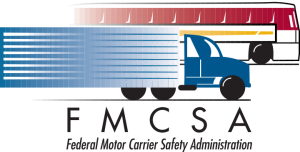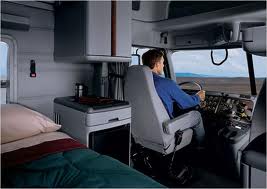CMV Drivers Don’t’ Touch That Cell Phone Before Reading This
The Ban
 The Federal Motor Carrier Safety Administration’s, FMCSA, “Drivers of CMVs: Restricting the Use of [Handheld] Cellular Phones” ruling will be put into effect starting January 3, 2012. The ban is an industry wide ban on the use of all handheld cell phone devices and only carriers exempt from Missouri federal rulings will remain unaffected. Also, this new ruling will carry stiff penalties for drivers and any carriers who allow their drivers to violate the ban. The ban is not just while drivers are on the roadways, but also while sitting in traffic and even stopped at stop lights or signs.
The Federal Motor Carrier Safety Administration’s, FMCSA, “Drivers of CMVs: Restricting the Use of [Handheld] Cellular Phones” ruling will be put into effect starting January 3, 2012. The ban is an industry wide ban on the use of all handheld cell phone devices and only carriers exempt from Missouri federal rulings will remain unaffected. Also, this new ruling will carry stiff penalties for drivers and any carriers who allow their drivers to violate the ban. The ban is not just while drivers are on the roadways, but also while sitting in traffic and even stopped at stop lights or signs.
The ban has been labeled as a severe traffic violation and the fines and penalties reflect as much. For each violation of the new ruling, truck drivers will be facing federal civil fines as high as $2,750. A second or third violation within a three year time frame will result in a 60 to 120 day CDL disqualification. In addition, the driver and the carrier’s CSA scores will be affected by any conviction of the ruling. Carriers will face an $11,000 fine for knowingly allowing their drivers to use handheld phones while operating their equipment. The complete ruling can be found here: http://www.gpo.gov/fdsys/pkg/FR-2011-12-02/html/2011-30749.htm.
The Reactions
 Coming on the heels of the new CSA rules, many drivers feel this is yet another FMCSA ruling targeting drivers just to extract more fines from their pockets. The ruling was said to have been based on research and was enacted for safety issues, but most drivers use their CB far more than a cell phone yet CB radios were not included in the ban. This has left drivers asking why. Will Smith, a company long haul driver said, “If this was to reduce distracted drivers by banning the use of their hands to hold a phone, why not ban CB radio use while driving? We use our hands constantly to push and hold the key-up button on the mic.” A ban on CB communication while driving would prove too counterproductive as most drivers rely on it for road conditions and such. Also, there is no need to avert the eyes from the road to use a CB as with cell phones.
Coming on the heels of the new CSA rules, many drivers feel this is yet another FMCSA ruling targeting drivers just to extract more fines from their pockets. The ruling was said to have been based on research and was enacted for safety issues, but most drivers use their CB far more than a cell phone yet CB radios were not included in the ban. This has left drivers asking why. Will Smith, a company long haul driver said, “If this was to reduce distracted drivers by banning the use of their hands to hold a phone, why not ban CB radio use while driving? We use our hands constantly to push and hold the key-up button on the mic.” A ban on CB communication while driving would prove too counterproductive as most drivers rely on it for road conditions and such. Also, there is no need to avert the eyes from the road to use a CB as with cell phones.
The few civilians aware of the new ruling feel a sense of relief knowing that the big rigs and busses they share the roadways with will now be even that more focused. They were pleased to learn a ban against texting for CMV drivers had already been enacted and this just adds to their peace of mind. However, most people outside of the industry are unaware of the ruling.
The Allowable
CMV drivers are allowed to use hands free cell phone devices and headsets. However, there are limitations and restrictions on these too. Drivers cannot reach for their phones, dial them or even hold them as long as they are driving or in the roadway at all. So, to be able to dial out while operating a CMV the phone must be equipped with one touch calling and/or voice activated dialing. Therefore, the use of headsets or a hands free system, such as the type that work through the speakers are mandatory for phone usage to avoid a citation and hefty fines.
 The Federal Motor Carrier Safety Administration’s, FMCSA, “Drivers of CMVs: Restricting the Use of [Handheld] Cellular Phones” ruling will be put into effect starting January 3, 2012. The ban is an industry wide ban on the use of all handheld cell phone devices and only carriers exempt from Missouri federal rulings will remain unaffected. Also, this new ruling will carry stiff penalties for drivers and any carriers who allow their drivers to violate the ban. The ban is not just while drivers are on the roadways, but also while sitting in traffic and even stopped at stop lights or signs.
The Federal Motor Carrier Safety Administration’s, FMCSA, “Drivers of CMVs: Restricting the Use of [Handheld] Cellular Phones” ruling will be put into effect starting January 3, 2012. The ban is an industry wide ban on the use of all handheld cell phone devices and only carriers exempt from Missouri federal rulings will remain unaffected. Also, this new ruling will carry stiff penalties for drivers and any carriers who allow their drivers to violate the ban. The ban is not just while drivers are on the roadways, but also while sitting in traffic and even stopped at stop lights or signs.The ban has been labeled as a severe traffic violation and the fines and penalties reflect as much. For each violation of the new ruling, truck drivers will be facing federal civil fines as high as $2,750. A second or third violation within a three year time frame will result in a 60 to 120 day CDL disqualification. In addition, the driver and the carrier’s CSA scores will be affected by any conviction of the ruling. Carriers will face an $11,000 fine for knowingly allowing their drivers to use handheld phones while operating their equipment. The complete ruling can be found here: http://www.gpo.gov/fdsys/pkg/FR-2011-12-02/html/2011-30749.htm.
The Reactions
 Coming on the heels of the new CSA rules, many drivers feel this is yet another FMCSA ruling targeting drivers just to extract more fines from their pockets. The ruling was said to have been based on research and was enacted for safety issues, but most drivers use their CB far more than a cell phone yet CB radios were not included in the ban. This has left drivers asking why. Will Smith, a company long haul driver said, “If this was to reduce distracted drivers by banning the use of their hands to hold a phone, why not ban CB radio use while driving? We use our hands constantly to push and hold the key-up button on the mic.” A ban on CB communication while driving would prove too counterproductive as most drivers rely on it for road conditions and such. Also, there is no need to avert the eyes from the road to use a CB as with cell phones.
Coming on the heels of the new CSA rules, many drivers feel this is yet another FMCSA ruling targeting drivers just to extract more fines from their pockets. The ruling was said to have been based on research and was enacted for safety issues, but most drivers use their CB far more than a cell phone yet CB radios were not included in the ban. This has left drivers asking why. Will Smith, a company long haul driver said, “If this was to reduce distracted drivers by banning the use of their hands to hold a phone, why not ban CB radio use while driving? We use our hands constantly to push and hold the key-up button on the mic.” A ban on CB communication while driving would prove too counterproductive as most drivers rely on it for road conditions and such. Also, there is no need to avert the eyes from the road to use a CB as with cell phones.The few civilians aware of the new ruling feel a sense of relief knowing that the big rigs and busses they share the roadways with will now be even that more focused. They were pleased to learn a ban against texting for CMV drivers had already been enacted and this just adds to their peace of mind. However, most people outside of the industry are unaware of the ruling.
The Allowable
CMV drivers are allowed to use hands free cell phone devices and headsets. However, there are limitations and restrictions on these too. Drivers cannot reach for their phones, dial them or even hold them as long as they are driving or in the roadway at all. So, to be able to dial out while operating a CMV the phone must be equipped with one touch calling and/or voice activated dialing. Therefore, the use of headsets or a hands free system, such as the type that work through the speakers are mandatory for phone usage to avoid a citation and hefty fines.

